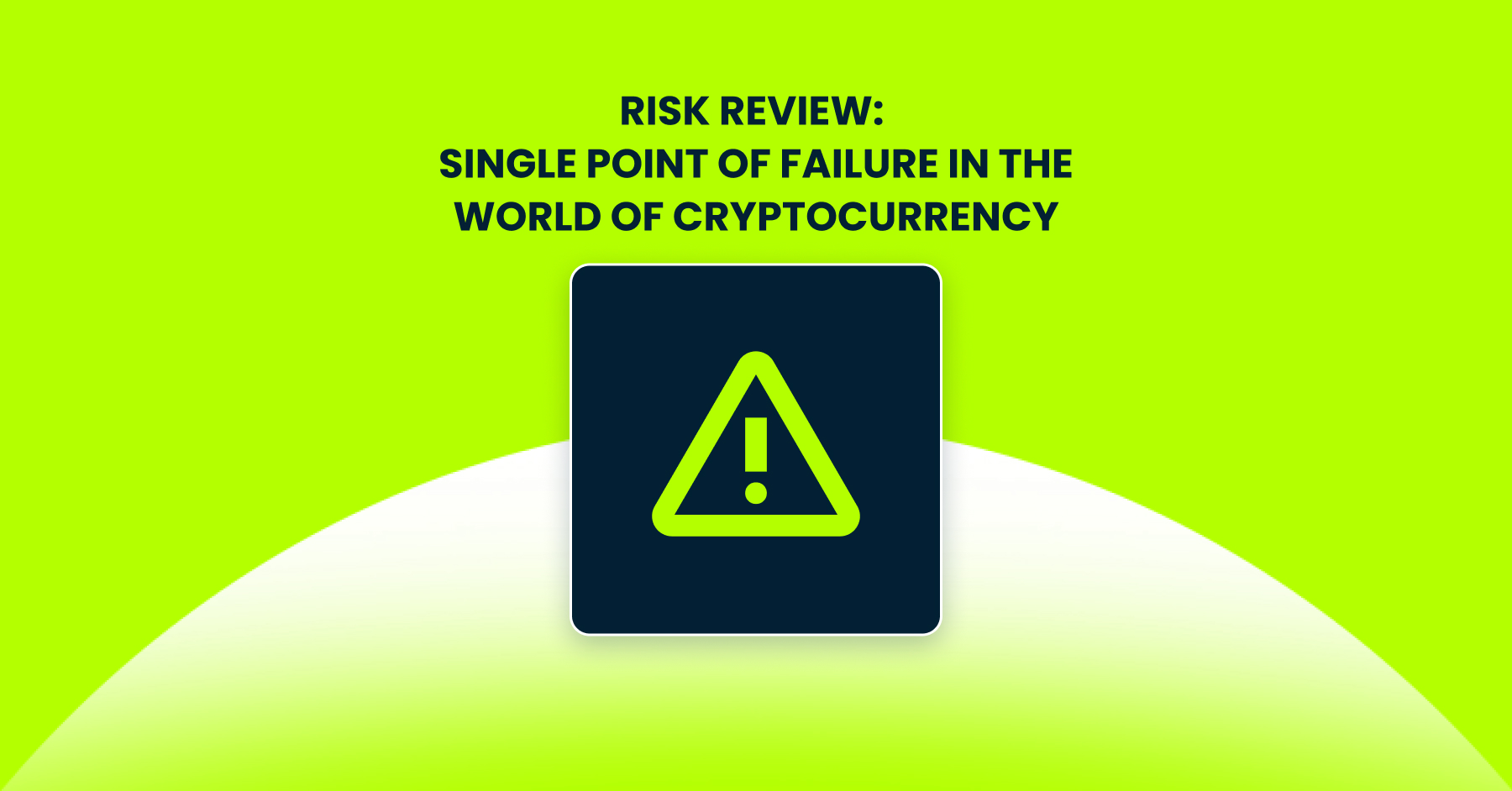Risk review: Single point of failure

Cryptocurrency has emerged as a disruptive force in the world of finance, offering decentralisation, security and transparency. At the centre of crypto lies blockchain technology, which eliminates the need for intermediaries like banks. However, while crypto promise resilience against traditional financial systems’ failures, they are not entirely immune to vulnerabilities. One critical vulnerability is the concept of a “Single Point of Failure” (SPOF). In this blog, we will delve into what SPOFs are, their implications in the world of cryptocurrency, and ways to mitigate them.
Understanding Single Points of Failure (SPOFs)
A single Point of Failure is a component within a system that’s failure could lead to the entire system’s breakdown. In the context of cryptocurrency, this can manifest in various forms, from centralised exchanges to specific blockchain nodes or even a consensus algorithm itself. Let’s explore these potential SPOFs and their consequences.
Centralised Exchanges
Centralised exchanges (CEXs) are the most prominent SPOFs in the cryptocurrency space. These platforms act as intermediaries, facilitating the trading of cryptocurrencies for millions of users worldwide. However, because they control user funds and private keys, they represent a significant risk.
Consequences:
- Hacks and security breaches: History has seen multiple instances where CEXs were hacked, resulting in the loss of millions of dollars in cryptocurrencies.
- Regulatory crackdown: Governments can impose restrictions or shut down CEXs, freezing users’ assets.
- Limited access: Dependence on CEXs can hinder users in regions where access to such platforms is restricted
Mitigation
- Decentralised exchanges (DEXs): DEXs eliminate the need for intermediaries by allowing peer-to-peer trading directly from users’ wallets.
- Hardware wallets: Store your cryptocurrencies in hardware wallets, reducing exposure to CEXs.
Specific Blockchain Nodes
In a decentralised network, the failure of critical nodes can disrupt the network’s operations. For example, in Proof of Stake (PoS) or Delegated Proof of Stake (DPoS) systems, if a significant number of validator nodes fail, the network’s security and functionality may be compromised.
Consequences:
- Reduced security: Fewer active nodes can make it easier for malicious actions to compromise the network.
- Transaction delays: A decrease in the number of validating nodes can lead to slower transaction confirmation times.
Mitigation:
- Incentivising node operators: Reward mechanisms can encourage users to run network nodes, ensuring a disrupted and resilient network.
- Redundancy: Running multiple nodes in diverse locations can help prevent localized failure from affecting the entire network.
Consensus Algorithm Vulnerabilities
Some cryptocurrencies rely on specific consensus algorithms that may have vulnerabilities or design flaws. For instance, if a vulnerability is discovered in the underlying algorithm, it could undermine the entire network’s security and integrity.
Consequences:
- Attacks and manipulation: Exploiting algorithmic vulnerabilities can lead to double-spending attacks, network forks, or other malicious activities.
- Loss of trust: Publicised vulnerabilities can erode trust in cryptocurrency and its ecosystem.
Mitigation:
- Regular audits and updates: Continuous development and rigorous testing can identify and address potential algorithmic vulnerabilities.
- Consensus diversity: Diversifying the consensus mechanism can reduce the risk of a single algorithmic failure affecting the entire ecosystem.

